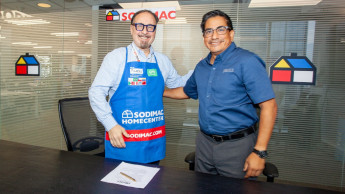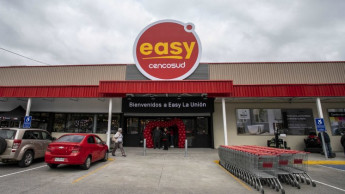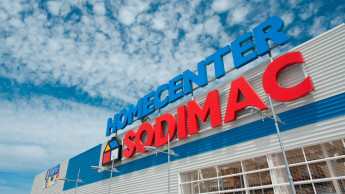The list of the retailers selling DIY products indicates the dominance of a few top firms and the continuing role of independent retailers still serving the market
Quite naturally, the list is headed by Home Depot, the world’s largest home center chain and, indeed, among the largest retailers of any kind throughout the world. It generated sales of $ 64.8 bn (€ 53.9 bn) in 2003 and was operating 1,587 units at yearend.
The 500th listing is of a paint retailer doing $ 22 mio (€ 18 mio) from 14 units – an amazing spread. The fact that the 500th retailer is doing so little indicates the dominance of a few top firms and the continuing role of independent retailers still serving the market.
Only 15 firms had home channel sales over $ 1 bn (€ 0.8 bn) and only 96 had sales of more than $ 100 mio (€ 83 mio).
The largest hardware retailer in the listing is Orchard Supply Hardware (OSH), a division of Sears that operates on the west coast. OSH cranked out $ 833 mio (€ 692 mio) in sales last year from 82 units, averaging slightly more than $ 10 mio (€ 8.3 mio) per store. OSH was an industry leader long before Sears bought it. Its stores are much larger than most hardware stores and feature excellent lawn and garden sections, too. In its Sears Hardware stores, Sears does far less, averaging $ 4.6 mio (€ 3.8 mio) from each of the 163 smaller units in that division.
National Home Channel News grouped the top 500 firms into 8 retail classifications: 81 home centers, 20 hardware stores, 20 lawn and garden dealers, 309 pro dealers, 11 building material outlets, 2 mass merchandisers, 29 paint stores and 28 home décor stores, which mostly sell floor and wall coverings.
The magazine reports that the entire hardlines/home channel marketplace grew 6.4 per cent during 2003, but home center chains grew the most – up 11.9 per cent. A large part of that difference is accounted for by the expansion efforts of Home Depot, Lowes and Menards, the top 3 home center chains.
The top retailers in each of the 8 retail classifications
Store type
Firm name
03 Sales in $
02 Sales in €
Stores
Average sales in $
Average sales in €
Home centers
Home Depot
64.8 bn
53.9 bn
1,587
40.8 mio
33.9 mio
Hardware stores
Orchard Supply Hardware
833 mio
692 mio
82
10.2 mio
8.5 mio
Mass merchants
Wal-Mart
14.6 bn
12.1 bn
3,551
4.1 bn
3.4 bn
Pro dealers
Stock Building Supply
2.7 bn
2.2 bn
224
12,0 mio
10,0 mio
Lawn and garden
Frank's Nursery
317 mio
264 mio
170
1.8 mio
1.5 mio
Paint stores
Sherwin Williams
3.4 bn
2.8 bn
2,721
1.2 mio
1.0 mio
Building materials
Gypsum Management
630 mio
524 mio
107
5.9 mio
4.9 mio
Home décor
CCA Global Partners
5.3 bn
4.4 bn
2,254
2.3 mio
1.9 mio
--nextpage--
Wal-Mart, the world’s largest retailer, also is the American mass merchandiser most committed to carrying an extensive stock of hardware, housewares and lawn and garden products. Only in building materials is it not an active player. With its hardlines, plus lawn and garden in season, occupying 20,000 or more sq. ft. (930 m²) typically, it accounts for more than $14.6 bn (€ 12,1 bn) in sales from those lines.
Sherwin Williams, the leading paint retailer, also is America’s largest paint manufacturer, whose products are also sold in thousands of non-company stores.
Stock Building Supply, which focuses on the builder and professional market, ranked 8th on the list, immediately followed by two other similar retailers – 84 Lumber and Lanoga.
Sears, with its own Sears Hardware stores, its OSH stores and its large, multi-line mall-based stores, ranks 4th, right behind Home Depot, Lowes and Wal-Mart, with $ 10 bn (€ 8.3 bn) in hardlines sales. Privately-owned Menards is 5th.
Among the top 10 firms, Lanoga, a firm which primarily serves the professional customer, enjoyed the largest growth during 2003 – 34.6 per cent, followed by CCA Global Partners, a home décor chain, with 30.9 per cent. Wal-Mart grew 21.7 per cent.
What is not reported in this listing, of course, are the sales efforts of the thousands of independent and small chain hardware, home center and lumber-building material dealers who comprise the rest of the hardlines market. These firms, most of whom belong to buying groups of one kind or another, number in the tens of thousands and account for many billions of collective sales, though individual unit sales are nowhere close to the average sales of an Orchard Supply Hardware store.
Though the number of such stores has declined steadily over the past decade or two, they still are a sizeable factor in the marketplace. Those which have survived have learned to position themselves as convenience outlets and have learned that better personal service, coupled with reasonably competitive pricing, is still attractive to millions of American consumers and business people.

 Menü
Menü
















